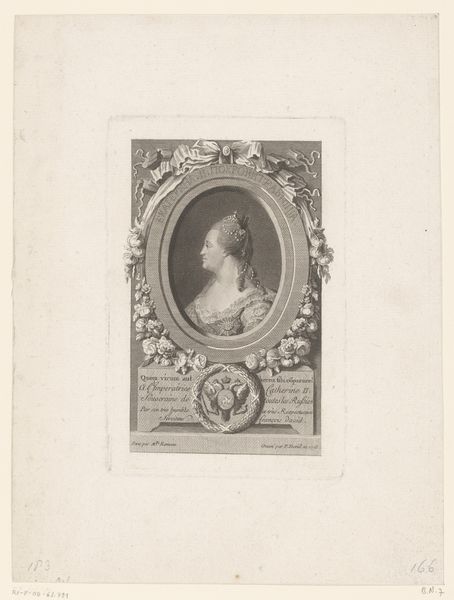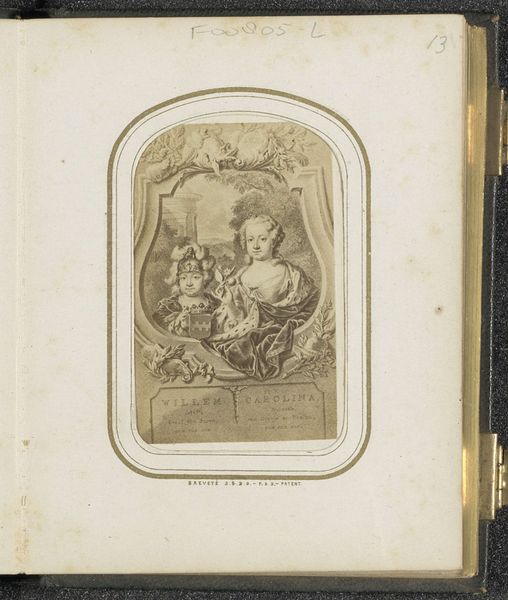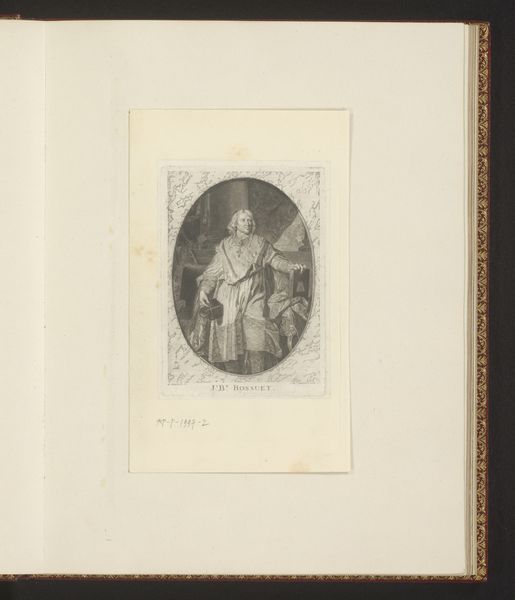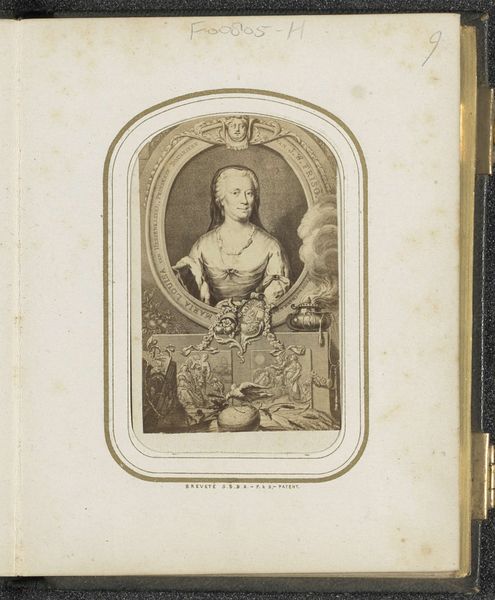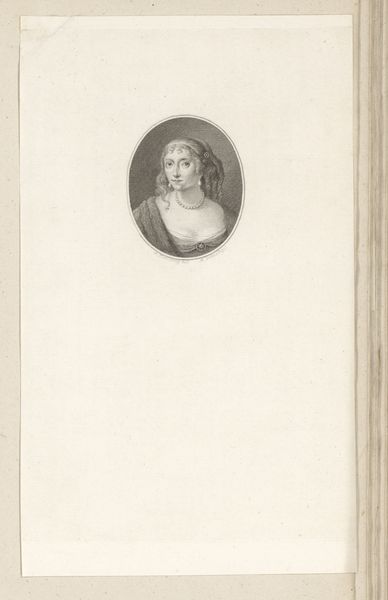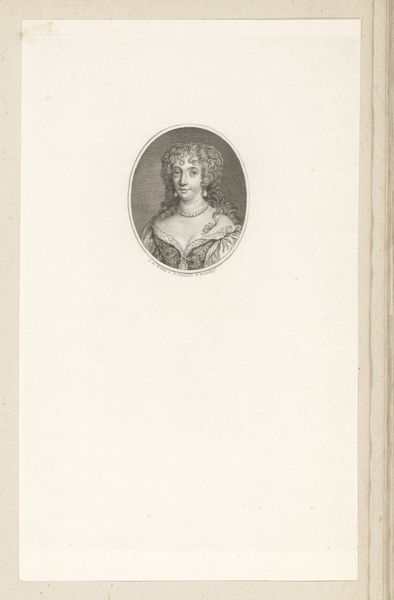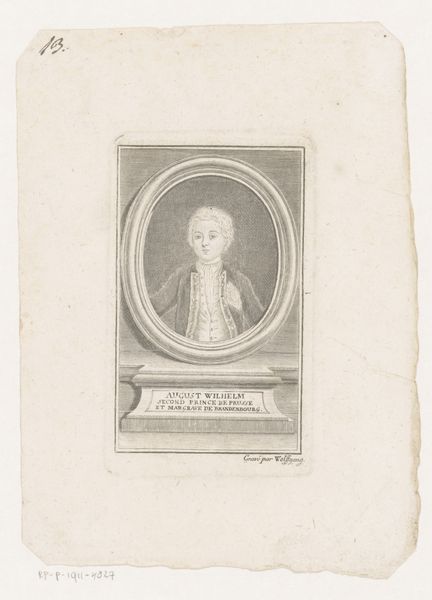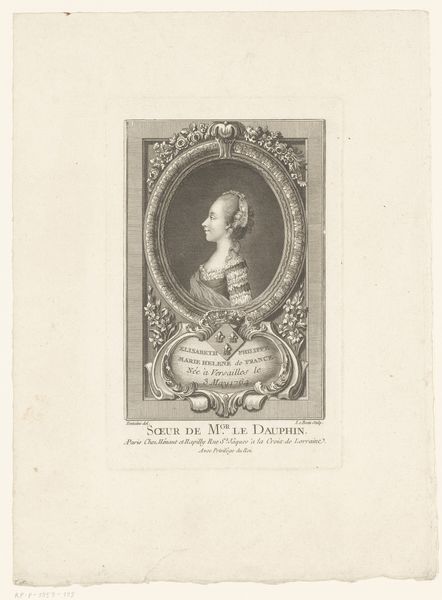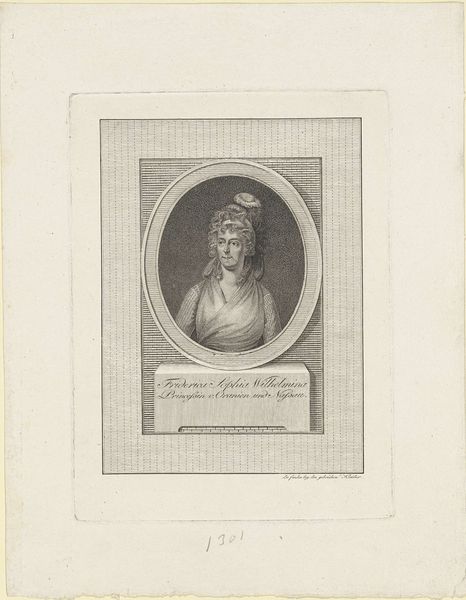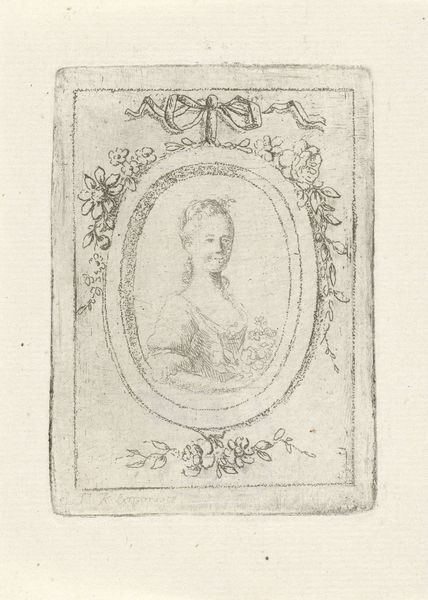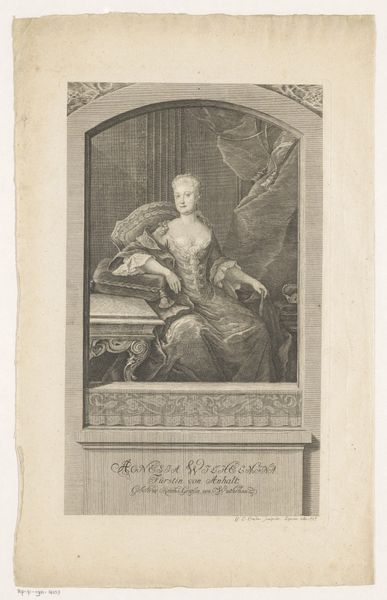
Fotoreproductie van (vermoedelijk) een prent van Maria II Stuart, echtgenote van prins Willem III c. 1860 - 1880
0:00
0:00
Dimensions: height 83 mm, width 52 mm, height 93 mm, width 57 mm
Copyright: Rijks Museum: Open Domain
Editor: Here we have what's thought to be a photogravure reproduction of an engraving of Maria II Stuart, the wife of Prince William III, dating back to between 1860 and 1880. Looking at this print, the first thing that strikes me is how it uses Baroque visual conventions, like the portraiture and decorative flourishes to convey royal power in an era far removed from the actual monarchy, even as the original work from 1688 would itself serve to bolster dynastic prestige. What jumps out at you, seeing it now? Curator: That's a sharp observation. For me, it's intriguing to consider why this image of Maria II was being reproduced in the late 19th century, seemingly far from her actual reign. Think about the social and political context then. Photography had revolutionized image production, but historical portraiture, especially of monarchs, served specific public functions. What role did visual representations of historical figures play in shaping national identity during that era of rapid social and political change? Editor: It's interesting how a relatively simple portrait could speak to broader questions of nationhood and social memory, in addition to merely showcasing aristocracy. I never considered how the proliferation of images might have influenced public perception. Curator: Exactly! Was this reproduction aimed at solidifying a sense of shared British history, or perhaps at reinforcing the established social order? Whose interests were being served by circulating images of royalty, even those from centuries prior? Were these widely available or directed toward elite circles? And considering that the artwork seems to come from an album page, to what use was it directed? Editor: I hadn’t considered the intended audience for these types of reproductions, just how the image appears. It challenges my perception of "historical" art; these engravings continued to influence culture in their reproductions, for example in these albums! Curator: Precisely. Understanding that ongoing influence is key.
Comments
No comments
Be the first to comment and join the conversation on the ultimate creative platform.
